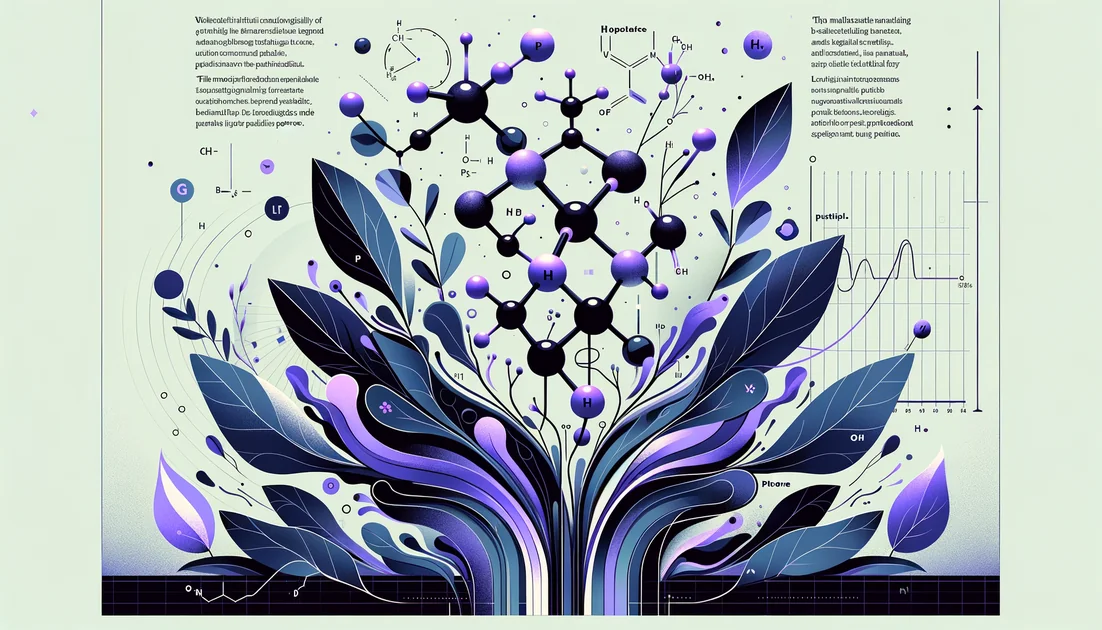
Borrowed Enzyme: How Lactase Let Adults Keep Milk on the Menu
You love the latte but dread the aftermath. Here's the twist: most adults on Earth naturally lose lactase—the tiny scissor that snips milk sugar—yet a pocketable enzyme and an old food craft keep dairy on the table without the turmoil.
- Evidence
- Robust
- Immediate Effect
- Within hours (same meal). → During the meal; breath hydrogen reductions observed within 60–180 minutes.
- Wears Off
- When the dose is no longer present (within the eating window).
The vanishing act you inherit—and the workaround you carry
By design, human lactase is abundant in infancy, trimming milk sugar (lactose) at the small intestine's brush-border so its halves—glucose and galactose—slip into the bloodstream. After weaning, many people's lactase production dials down; globally, about two-thirds of adults have lactose malabsorption, though not all get symptoms. In the U.S., it's roughly one in three. That difference between malabsorption (a lab finding) and intolerance (you feel it) matters. As an NIH panel put it, "A lot of people who think they have lactose intolerance don't," urging measured experiments before cutting dairy entirely. [7] [9] When milk sugar outruns your enzyme, bacteria in the colon throw a feast—fermenting lactose into gas and acids that stretch and irritate. Breath hydrogen spikes, a kind of exhaled fingerprint of the fermentation party.
The borrowed enzyme
The simplest plot twist is almost literal: borrow the missing scissors. Chewable or swallowable lactase—an enzyme made by microbes like Aspergillus oryzae or Kluyveromyces lactis—travels with your first bites of dairy and breaks lactose in the meal itself. In a randomized, double-blind, crossover trial, 47 adults with confirmed intolerance took chewable lactase or placebo with a lactose challenge. Symptoms fell, and breath hydrogen over three hours dropped by 55% on lactase. [1] Earlier, a single-dose trial using three chewable tablets (9,900 FCC units total) showed the same pattern: lower breath hydrogen and less cramping, gas, and diarrhea versus placebo in the first hours after lactose. [2] Notably, "all lactase preparations are not the same." In a head-to-head, products differed: one reduced malabsorption markers more, another helped symptoms more. Translation: dose, formulation, and timing matter—and you may need to test what works for you. [3]
A dairy hack older than pills
Long before caplets, cultures tamed lactose with microbes. Yogurt's live cultures carry their own lactase. In classic studies, lactose-malabsorbing adults exhaled about one-third as much hydrogen after yogurt as after milk with the same lactose; symptoms were fewer. The researchers called yogurt "an autodigesting source of lactose," because the cultures' enzyme keeps cutting sugar as the food moves through. [4] [5] The effect is visible in kids, too: active-culture yogurt brought fewer symptoms and a gentler rise in breath hydrogen than milk; pasteurized (culture-killed) yogurt landed somewhere in between. [7]
Inventing Lactaid: a public–private arc
In the 1970s, USDA scientist Virginia Holsinger tested microbial lactase as a food treatment. She showed you could pre-treat milk so 87–95% of lactose was already split—sweeter on the tongue, easier on the gut. A dairyman's son, Alan Kligerman, saw the practical magic. Their collaboration birthed Lactaid products: first powders and liquids for dairies, then lactose-free milk (1979) and, eventually, lactase capsules for consumers. Millions who'd sworn off milk quietly returned. [12] [13]
Misconceptions and surprises
Raw milk won't save you. In a randomized crossover at Stanford, raw milk failed to reduce malabsorption or symptoms compared with pasteurized milk. Breath hydrogen was actually higher on day 1 with raw milk; by day 8, it was no better. [6]
Your gut can learn a little. In controlled studies, gradually feeding lactose boosted fecal beta-galactosidase (microbial lactase) within days and tempered the hydrogen surge after a challenge. Think of it as training your microbial sous-chefs. This isn't for everyone, but it explains why many people tolerate small, regular amounts. [14] [15]
Probiotics can help some—not all. A recent randomized trial found an eight-week probiotic reduced symptom scores after lactose, though the breath test didn't budge compared with placebo; strain and dose matter and results vary. [16] [17]
What it feels like, and what to try
Picture sitting down to pizza with friends. If you're enzyme-short, you can stack the deck:
Take lactase with the first bites. Human studies suggest benefits within the same meal; some products advise another dose if you're grazing for more than 30–45 minutes. [1] [10]
Use the foods that help themselves. Yogurt with live cultures and aged cheeses (naturally lower in lactose) often sit better than milk; many can handle about a cup of milk with food. [5] [8]
Start low, go slow. If you've avoided dairy for a while, tiptoe back with small, mixed meals to explore your tolerance; some people find it increases with steady, modest exposure. [15]
Linda, featured in a public radio story, tried cutting out dairy entirely, then learned the culprit wasn't lactose alone. The point: symptoms have look-alikes (IBS, celiac, inflammation), and the fix depends on the cause. Before you exile food groups, test, tinker, and, if needed, get evaluated. [20] [9]
Two voices to carry with you
"A lot of people who think they have lactose intolerance don't.. They may have other conditions, or they may just need to consume smaller amounts of dairy." — Frederick J. Suchy, MD, chair of the NIH consensus panel. [8]
"This autodigesting feature makes yogurt a well-tolerated source of milk for lactase-deficient persons." — Dennis A. Savaiano, PhD, on live-culture yogurt's built-in enzyme. [4]
Practical notes for real life
Dose lives in "FCC units." Many tablets contain 3,000–9,000 units; typical advice is 1–3 tablets with the first bite of dairy and another if you keep eating past about 30–45 minutes. Results vary by brand and meal size. [10]
If you prefer lactose-free milk, it's just milk pre-treated with lactase—sweeter because the sugar is already in simpler pieces. [9]
If symptoms persist despite enzyme and small amounts, revisit the diagnosis. Not everyone with a positive breath test feels ill, and not everyone who feels ill has lactose intolerance. [7] [9]
What's next
Beyond better tablets (including targeted release for the small intestine), researchers are exploring living delivery systems—engineered probiotic circuits that sense lactose, release lactase, and even counter the acidification of fermentation in the colon (so the enzyme keeps working). It's early, but it hints at a future where your microbiome, not your pocket, carries the fix. [18] Milk, it turns out, wasn't a universal birthright; it became a cultural choice—ferment it, split it, or sip it with a borrowed enzyme. The goal for the health-conscious isn't purity; it's permission: to keep what nourishes you and ditch what doesn't, with curiosity instead of fear.
Key takeaways
- •Lactose malabsorption is common globally (~two-thirds), but intolerance is the symptomatic subset; in the U.S. it's roughly one in three.
- •Oral lactase taken with dairy lowers breath hydrogen and symptoms for that meal, though commercial products vary in performance.
- •Practical dosing: 3,000–9,000 FCC units with the first bites of dairy; larger or longer meals may need a higher or second dose at ~30–45 minutes.
- •Live-culture yogurt carries microbial lactase, making it a well-tolerated, "autodigesting" dairy option compared with milk.
- •Best for people who want dairy flexibility at restaurants, travel, and social events; if symptoms persist despite enzyme and small portions, reassess causes.
You might also like
Explore more of our evidence-led investigations, comparisons, and guides across every article style.

Bluebonnet Nutrition (supplements)
The Paradox of Bluebonnet Nutrition: Certification Powerhouse, Modest Innovation, Limited Public COAs


Best for Histamine Intolerance
DAO enzyme: 10–30k HDU before meals

Beta-Alanine
You swallow the scoop and, within minutes, your skin prickles. The odd thing about beta-alanine is that you can feel it today—but its real work shows up weeks from now.

Protected Brain Fuel: Prevent The Damage
Protective + dual-pathway combo with promising but not definitive synergy; best for lowering inflammation/oxidative stress markers, not proven to outperform omega-3 alone on hard outcomes.

Tocotrienols
The stealthier cousins of vitamin E—built with springy tails that move differently in cell membranes and behave differently in your body.


